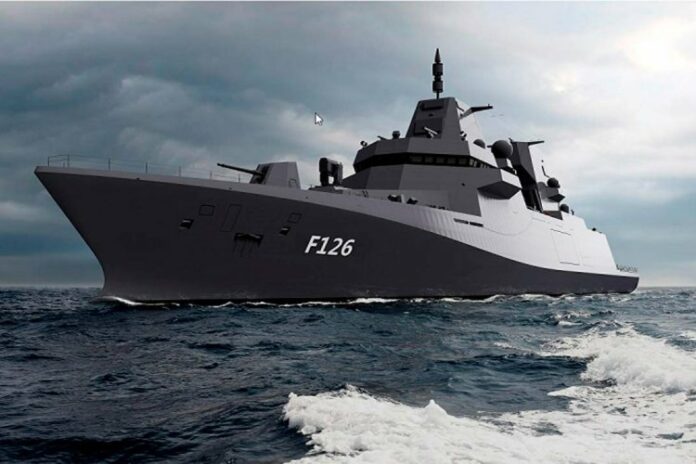Each vessel will be equipped with two rudders, developed to withstand extreme shocks and to improve the hydrodynamic properties of the fast vessels.
The full spade rudders of the Atlantic type by Damen Marine Components (DMC) are purpose designed for the frigate project to fit the specific hull form and operational profile of these naval vessels. The rudders have a relatively slim profile to reduce drag and improve course keeping at high speeds, maintaining good manoeuvrability at low speeds in harbours or during special operations.
The unique Asymmetric Rudder Technology (ART) as developed by DMC will be applied. This means that the leading edge of the rudders will be asymmetric, directing the turbulent water flow from the propellers in front of the rudders along the rudder surface more smoothly. This reduces cavitation, increases rudder efficiency, and reduces drag of the vessel. Further improvement of efficiency is acquired by the Silent Bulb that is incorporated in the rudders, right in the wake of the propeller axis.
This is an energy saving addition to the rudder profile, positioned on the centre line of the propeller. The Silent Bulb improves the water flow that comes from the propeller and increases thrust at higher loads. The design of the bulb is significantly influenced by the distance to the propeller, and it is shaped to fit perfectly with the propeller hub.
All of these specific features of advanced rudder design by DMC show best performance on high-speed oceangoing vessels. Based on the principles of improved water flow, drag reduction and fuel saving, DMC designed the rudders with all of these specific qualities specific to the F126 hull. The rudder profile was investigated intensively, tank tests have been performed to obtain the optimum shape with regards to resistance reduction and manoeuvring improvement. As the F126 vessels are equipped with twin counter rotating propellers, the rudders for any vessel are designed to direct the water flows in the wake of propellers moving opposite to each other.
Special requirement for the naval operations of the F126 is to build the whole vessel, including the rudders, to extreme shock resistant specifications. The rudders are designed to withstand enormous shock loads. Based on extensive computational calculations, critical areas are strengthened and special welding details are applied. High strength steel of the best quality is used for construction, honouring the classification rules for naval ships.
“We are happy to contribute to these state-of-the-art vessels,” Sales and Marketing Director Wim Knoester of DMC says. “With these twin-screw high-speed vessels, we can demonstrate the quality, efficiency and durability of our rudders. Being part of this high-profile Damen project allows us to show our capacity of delivering the highest class of ship systems.”



